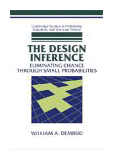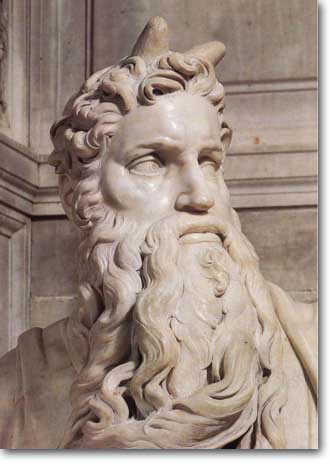Who Is Phillip Johnson?
Best-selling author Phillip Johnson has become the leader of the Intelligent Design movement. His books Darwin on Trial, Reason in the Balance, Defeating Darwinism by Opening Minds and the recently released Objections Sustained have become rallying points for Christian scholars across the academic spectrum. Johnson has addressed university audiences around the country, sometimes on his own, often in debate with a leading proponent of evolution. He has even addressed in private session entire science, law, and philosophy departments at top universities. Well, just who is Phillip Johnson and how does he rate such attention?
Johnson was raised in a nominally Christian family, but he grew to become a convinced skeptic of the faith. This process was greatly aided by his education, first as an undergraduate at Harvard and then at the University of Chicago Law School where he graduated first in his class. Johnson became convinced that people were basically good, education would solve whatever problems you had, the stuff of Sunday school was okay but mythology, and he could achieve success by thinking for himself and absorbing the culture around him.
This is the enticing picture the academic community paints for students and Johnson bought it. But things began to unravel in his mid-thirties. He had achieved his goals. He served as law clerk for Supreme Court Chief Justice Earl Warren and held a distinguished professorship of law at UC Berkeley, but he lacked fulfillment. He was publishing papers nobody read, or ought to read. His marriage to a beauty queen fell apart and he was single parenting for awhile. The writings of C. S. Lewis had impacted him greatly, but he thought, “Too bad we can’t believe in that anymore.” Eventually he heard the gospel preached in a way that seemed plausible and attractive. Johnson envied the speaker’s combination of commitment and fulfillment. “Do I have something so wonderful?” he questioned. Johnson said, “They believed it, I could too.”
Johnson put his faith in Christ, but faced a dilemma. If the gospel is true, why are all the “intelligent” people agnostic? He prayed for insight. Beginning with a sabbatical at University College in London in 1987-88, Johnson embarked on an intellectual journey. This journey has developed into a project that has seen him publish four books, deliver hundreds of lectures on college campuses, and become the leader of the fledgling Intelligent Design movement over the last ten years. Primarily through his study of evolution, Johnson learned that the academic community’s primary intellectual commitment is to the philosophy of naturalism. If the “facts” contradict materialistic conclusions, then the “facts” are either explained away, ignored, or just plain wrong.
Therefore, evolutionists like Richard Dawkins can say things like “Biology is the study of complicated things that give the appearance of having been designed for a purpose,” and actually say it with a straight face. The appearance of design is an illusion, you see, because we “know” that organisms evolved and the primary reason we “know” this is because naturalistic philosophy demands it.
Johnson’s primary task seems to be continually provoking the scientific community into facing the reality of its naturalistic presuppositions. In earlier years, the scientific establishment was able to dismiss creationists and not officially respond. But when a tenured law professor from Berkeley starts messing with your head, people start answering back. The National Academy of Sciences has issued two publications in the last two years trying to stem the tide.{1} The cracks in Darwinian evolution are beginning to show.
What Could a Law Professor Say About Evolution?
What could a legal scholar possibly have to say about evolution? Many in the academic community have raised the same question as Phillip Johnson has visited their university. In his own words Johnson states: “I approach the creation-evolution dispute not as a scientist but as a professor of law, which means among other things that I know something about the ways that words are used in arguments.”{2}
Specifically what Johnson noticed was that both the rules of debate about the issue as well as the word evolution itself were defined in such a way as to rule out objections from the start. Science is only about discovering naturalistic causes of phenomena, therefore arguing against the sufficiency of natural causes is not science! Also the “fact of evolution” is determined not by the usual definition of fact such as collected data or something like space travel which has been done, but as something arrived by majority vote! Steven J. Gould said, “In science, fact can only mean ‘confirmed to such a degree that it would be perverse to withhold provisional assent.’”{3}
In the early chapters of Darwin on Trial, Johnson does an excellent job of summarizing the evidence that has been around for decades calling Darwinian evolution into question. These include problems with the mechanism of mutation and natural selection, problems with finding transitional fossils between major groups when they should be numerous, problems with the molecular evidence for common descent, and severe problems with any scenario for the origin of life.
In a chapter titled “The Rules of Science” Johnson excels in illuminating the clever web evolutionists have drawn to insulate evolution from criticism.{4} In order to limit discussion to naturalistic causes, science is defined in purely naturalistic terms. In the Arkansas creation law decision, Judge Overton said science was defined as being guided and explained by natural law, testable, tentative, and falsifiable. Overton got this from the so- called expert testimony of scientists collected for the trial by the ACLU. These criteria were used against creation on the one hand to say that a creator is not falsifiable, and also that the tenets of creation science were demonstrably false. How can something be non-falsifiable and false at the same time?
The conflict enters in when one realizes that creation by Darwinist evolution is as un- observable as creation by a supernatural creator. No one has ever observed any lineage changing into another and the few fossil transitions that exist are fragmentary and disputable. “As an explanation for modifications in populations, Darwinism is an empirical doctrine. As an explanation for how complex organisms came into existence in the first place, it is pure philosophy.”{5}
In a chapter titled “Darwinist Religion” Johnson points out that despite the claims of scientists that evolution is secular, it is loaded with religious and philosophical implications. Most definitions of evolution emphasize its lack of purpose or goal. This makes evolution decidedly non-purposive in contrast to a theistic, purposive interpretation of nature. If it is the philosophic opposite of theism, evolution must be religious itself. Darwin himself constantly argued the superiority of descent with modification over creation. If scientific arguments can be made against theism, why can’t scientific arguments be made for theism?
Darwin on Trial continues to sell, to be read, and to influence those open to consider the evidence. Since Johnson is not a scientist his book is highly readable to the educated layman. If you have never picked it up, you owe it to yourself to read what has become a classic in the creation/evolution controversy.
Johnson Extends His Case against Evolution into Law and Education.
Over the years of speaking on the creation/evolution issue I have been asked many times why people get so upset over this issue. If it is just a question of scientific accuracy, why does it produce such emotional extremes? The answer, of course, is that the creation/evolution debate involves much more than science. At question is which worldview should hold sway in making public decisions.
In Phil Johnson’s second book, Reason in the Balance, he makes this very point when he says, “What has really happened is that a new established religious philosophy has replaced the old one. Like the old philosophy, the new one is tolerant only up to a point, specifically, the point where its own right to rule the public square is threatened.”{6}
The old philosophy Johnson speaks of is the theistic or Judeo-Christian worldview and the new philosophy is the materialist or naturalistic worldview. Johnson has referred to Reason in the Balance as his most significant and important work. That is because it is here that he lays the all important philosophical groundwork for the scientific, legal, and educational battleground of which the creation/evolution controversy is only a part.
That we no longer live in a country dominated by Judeo-Christian principles should be inherently obvious to most. But what many have missed is the concerted effort by the intellectual, naturalistic community to eliminate any possibility of debate of the worthiness of their position. On page 45 Johnson says,
“Modernist discourse accordingly incorporates semantic devices–such as the labeling of theism as religion and naturalism as science–that work to prevent a dangerous debate over fundamental assumptions from breaking out in the open. As the preceding chapter showed, however, these devices become transparent under the close inspection that an open debate tends to encourage. The best defense for modernist naturalism is to make sure the debate does not occur.”{7}
Johnson is quick to point out that there is not some giant conspiracy, but simply a way of thinking that dominates the culture, even the thinking of many Christians.
Therefore, in the realm of science when considering the important question of the existence of a human mind, only the biochemical workings of the brain can be considered. Not because an immaterial reality has been disproved, but because it is outside the realm of materialistic science and therefore not worth discussing. Allowing the discussion in the first place lays bare a discussion of fundamental assumptions, the very thing that is to be avoided.
In education, “The goal is to produce self-defining adults who choose their own values and lifestyles from among a host of alternatives, rather than obedient children who follow a particular course laid down for them by their elders.”{8} The reason, of course, is if God is outside the scientific discussion of origins, then how we should live must also exclude any absolute code of ethics. This also precludes the underlying assumptions from being discussed.
In law, naturalism has become the established constitutional philosophy. Rather than freedom of religion, the courts are moving to a freedom from religion. The major justification is that “religion” is irrational when it enters the domain of science or a violation of the first amendment in public education. “Under current conditions, excluding theistic opinions means giving a monopoly to naturalistic opinions on subjects like whether humans are created by God and whether sexual intercourse should be reserved for marriage.”{9} What then are the strategies for breaking the monopoly?
Can Darwinism Be Defeated?
The main thing Christian parents and teachers can do is to teach young thinkers to understand the techniques of good thinking and help them tune up their baloney detectors so they aren’t fooled by the stock answers the authorities give to the tough questions.{10}
So says Phillip Johnson in his recent book, Defeating Darwinism. (For a fuller review see Rick Wade’s article, Defeating Darwinism: Phil Johnson Steals the Microphone.) Johnson is at his best here, relaying the many semantic and argumentative tricks used to cover up the inadequacies of Darwinism. In the chapter “Tuning Up Your Baloney Detector,” Johnson introduces the reader to examples of the use of selective evidence, appeals to authority, ad hominem arguments, straw man arguments, begging the question, and lack of testability. This chapter will give you a good grasp of logical reasoning and investigative procedure.
Johnson also explains the big picture of his strategy to weaken the stranglehold of Darwinism on the intellectual community. He calls it the wedge. Darwinism is compared to a log that seems impenetrable. Upon close investigation, a small crack is discovered. “The widening crack is the important but seldom recognized difference between the facts revealed by scientific investigation and the materialist philosophy that dominates the scientific culture.”{11} In order to split the log, the crack needs to be widened. Inserting a triangular shaped wedge and driving the pointed end further into the log can do this. As the wedge is driven further into the log, the wider portions of the wedge begin widening the crack.
Johnson sees his own books as the pointed end of the wedge, finding the crack and exposing its weaknesses. Other books in these initial efforts would certainly include the pioneering works of Henry Morris,{12} Duane Gish,{13} Charles Thaxton,{14} and even the agnostic Michael Denton.{15} Following close behind and fulfilling the role of further widening the crack are the works of J. P. Moreland,{16} Michael Behe,{17} and William Dembski.{18} What is needed now to widen the crack further and eventually split the log are larger numbers of theistic scientists, philosophers, and social scientists to fill in the ever widening portions of the wedge exposing the weaknesses of naturalistic assumptions across the spectrum of academic disciplines.
Here Johnson’s strategy meshes nicely with Probe Ministries. Much of our energy is spent educating young people in a Christian worldview through Mind Games Conferences, the ProbeCenter in Austin, Texas, and our website (www.probe.org). We share with Johnson the joy of encouraging and opening doors for young people in the academic community. Johnson says,
“If you know a gifted young person, help him or her to see the vision. Those who are called to it won’t need any further encouragement. Once they have seen their calling, you had better step out of the way because you won’t be able to stop them even if you try.”{19}
There is also an inherent risk in all this. Teaching young Christians to think critically and have the courage to join this exciting and meaningful cultural battle means they will also begin to examine their own faith critically. Some may even go through a period of doubt and deep questioning. While this may sound threatening, we shouldn’t shy away. If Jesus truly is the way, the truth, and the light then any “truth” exposed to the light will endure. Our children will be stronger having put their faith to the test. The reward of possibly making a directional change in our downward spiraling culture is worth the risk.
Johnson Responds to the Intellectual Elite
One of the reasons that Phillip Johnson has become a leader in the Intelligent Design movement is the combined effect of his tenured position on the law faculty of the prestigious University of California at Berkeley and his deftness and sheer enjoyment in taking on the power brokers within the established halls of academia. Johnson has traveled extensively in the U.S. and abroad. He has also lectured and debated before university audiences and faculties. His knowledge of debate, concise prose, and his likeable demeanor allows him to bring the issues to the table skillfully. Many are able to think clearly about these issues for perhaps the first time.
Another avenue Johnson has pursued with great success has been to write articles and review books for some of the leading magazines and newspapers in the country. Johnson’s fourth book, Objections Sustained: Subversive Essays on Evolution, Law & Culture,{20} is a collection of his essays since the publication of Darwin on Trial in 1991. While most of the essays in the book were originally published in either the journal First Things or the paper Books and Culture, Johnson’s pen has also been found in the pages of The Atlantic, The Wall Street Journal, The Washington Times, The New Criterion, and many other national and local magazines and newspapers. He has openly challenged some of the leading spokesmen for naturalistic evolution such as Stephen J. Gould and Richard Lewontin of Harvard, Richard Dawkins of Oxford University, and Daniel Dennet from Tufts University.
The point of all this is to draw the Darwinists out into the open where the debate can be seen and heard by all who are interested. Previously, creation was routinely dismissed as religion, but Johnson is not so easily swept aside since he has been able to expose the house of cards behind the bluster of Darwinism. The debate has crept more and more out in the open.
Two examples come to mind. First, the National Association of Biology Teachers (NABT) was caught with its hand in the cookie jar. In 1995, they released a statement about evolution describing it as, among other things, unsupervised and impersonal. Such theological/philosophical concepts should have no place in a “scientific” statement. A storm of controversy sparked both within and outside the teachers’ ranks culminated in a reconsideration of the statement by the NABT board. At first the board voted unanimously to uphold the statement, and then a few days later, voted to remove the offending words. The New York Times remarked that “This surprising change in creed for the nation’s biology teachers is only one of many signs that the proponents of creationism, long stereotyped as anti-intellectual Bible-thumpers, have new allies and the hope of new credibility.”{21}
Second, the prestigious National Academy of Sciences has published two official publications attacking creationism{22} and supporting the teaching of evolution.{23} Rather than taking its critics head-on, these two books timidly revert to old and tattered evidences and appeals to authority. For instance, the National Academy boldly asserts that “there is no debate within the scientific community over whether evolution occurred, and there is no evidence that evolution has not occurred.”{24}
Science and Creationism says on the one hand, “Scientists can never be sure that a given explanation is complete and final.”{25} But evolution cannot really be questioned because “Nothing in biology makes sense in biology except in the light of evolution.”{26} Such obfuscation is now officially in the open arena–precisely where Johnson has been trying to force it to appear. The next ten to fifteen years promise to be exciting. I hope you continue to read Phillip Johnson and observe the ever broadening wedge drive deeper into the chinks of the Darwinian armor.
Notes
1. National Academy of Sciences, Teaching About Evolution and the Nature of Science (Washington, D. C.: National Academy Press, 1998), 140. Available online at http://www.nap.edu/readingroom/books/creationism/.
National Academy of Sciences, Science and Creationism: A View from the National Academy of Sciences (Washington D. C.: National Academy Press, 1999), 35. Available online at http://www.nap.edu/readingroom/books/evolution98.
2. Phillip Johnson, Darwin On Trial (Downers Grove, IL: InterVarsity Press, 1991), 8.
3. Stephen J. Gould, “Evolution as Fact and Theory” in Hen’s Teeth and Horse’s Toes (New York: W. W. Norton, 1983), 255.
4. Johnson, Darwin on Trial, 111-122.
5. Ibid., 115.
6. Phillip E. Johnson, Reason in the Balance: The Case Against Naturalism in Science, Law and Education (Downers Grove, IL: InterVarsity Press, 1995), 37.
7. Ibid., 45.
8. Ibid., 157.
9. Ibid., 29.
10. Phillip E. Johnson, Defeating Darwinism by Opening Minds (Downers Grove, IL: InterVarsity Press, 1997), 116.
11. Ibid., 92.
12. Henry Morris, Scientific Creationism (San Diego: Creation-Life Publishers, 1974).
13. Duane Gish, Evolution: The Fossils Say No! (San Diego: Creation-Life Publishers, 1972).
14. Charles B. Thaxton, Walter L. Bradley, and Roger L. Olsen, The Mystery of Life’s Origin (New York: Philosophical Library, 1984).
15. Michael Denton, Evolution: A Theory in Crisis (Bethesda, MD: Adler and Adler, 1986).
16. J. P. Moreland, ed., The Creation Hypothesis: Scientific Evidence for an Intelligent Designer (Downers Grove, IL: InterVarsity Press, 1994).
17. Michael Behe, Darwin’s Black Box: The Biochemical Challenge to Evolution (New York: The Free Press, 1996).
18. William A. Dembski, The Design Inference: Eliminating Chance through Small Probabilities (New York: Cambridge University Press, 1998.) And, William A. Dembski, ed., Mere Creation: Science, Faith and Intelligent Design (Downers Grove, IL: InterVarsity Press, 1998).
19. Johnson, Defeating Darwinism, 96.
20. Johnson, Objections Sustained: Subversive Essays on Evolution, Law & Culture (Downers Grove, IL: InterVarsity Press, 1998).
21. Quoted in Johnson, Objections Sustained, p. 88.
22. Science and Creationism, see note 1.
23. Teaching about Evolution and the Nature of Science, see note 1.
24. Ibid., 4.
25. Science and Creationism, 1.
26. Ibid., ix.
©1999 Probe Ministries
 True scientific revolutions that impact more than a single discipline rarely occur more than once a century. Newton’s Principia, published in the 17th century, truly qualifies. Darwin’s Origin of Species, published in 1859, also belongs on the list. Standing in the wings, ready to join these esteemed works and perhaps even overturn the latter, stands William Dembski’s The Design Inference.
True scientific revolutions that impact more than a single discipline rarely occur more than once a century. Newton’s Principia, published in the 17th century, truly qualifies. Darwin’s Origin of Species, published in 1859, also belongs on the list. Standing in the wings, ready to join these esteemed works and perhaps even overturn the latter, stands William Dembski’s The Design Inference. William Dembski’s groundbreaking book, The Design Inference from Cambridge University Press, is highly technical. Dembski has therefore written a follow-up book titled, Intelligent Design: The Bridge between Science and Theology,
William Dembski’s groundbreaking book, The Design Inference from Cambridge University Press, is highly technical. Dembski has therefore written a follow-up book titled, Intelligent Design: The Bridge between Science and Theology, Lael Arrington has written a truly wonderful and exceptionally helpful book, Worldproofing Your Kids,
Lael Arrington has written a truly wonderful and exceptionally helpful book, Worldproofing Your Kids,
 So Michelangelo sculpted Moses with two horns on his head. That is what they thought the Bible literally said. Now we know better, and we changed our interpretation of this Scripture based on more accurate information. We believe we need even more accurate information from both the Bible and science to answer the age of the earth question.
So Michelangelo sculpted Moses with two horns on his head. That is what they thought the Bible literally said. Now we know better, and we changed our interpretation of this Scripture based on more accurate information. We believe we need even more accurate information from both the Bible and science to answer the age of the earth question.